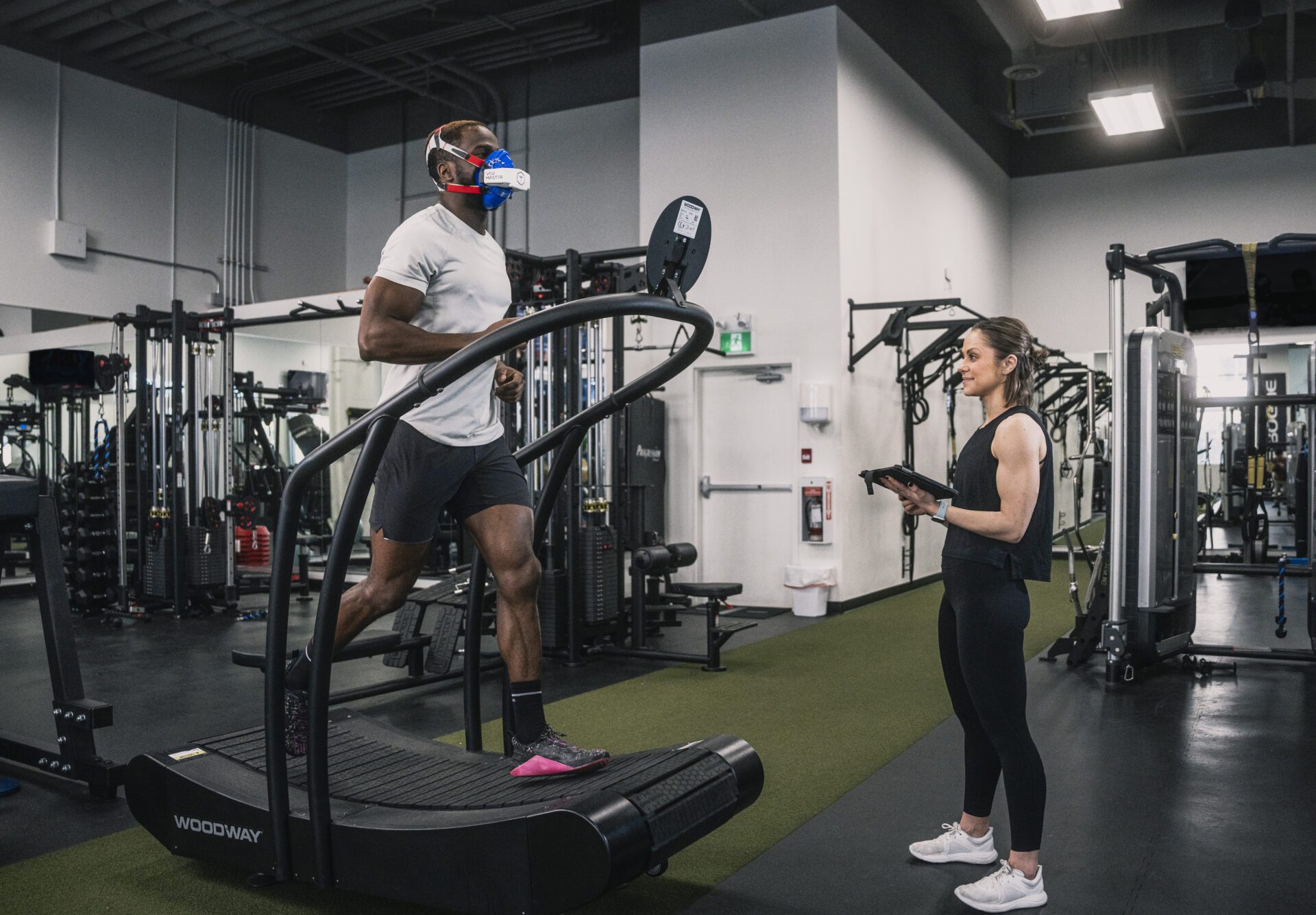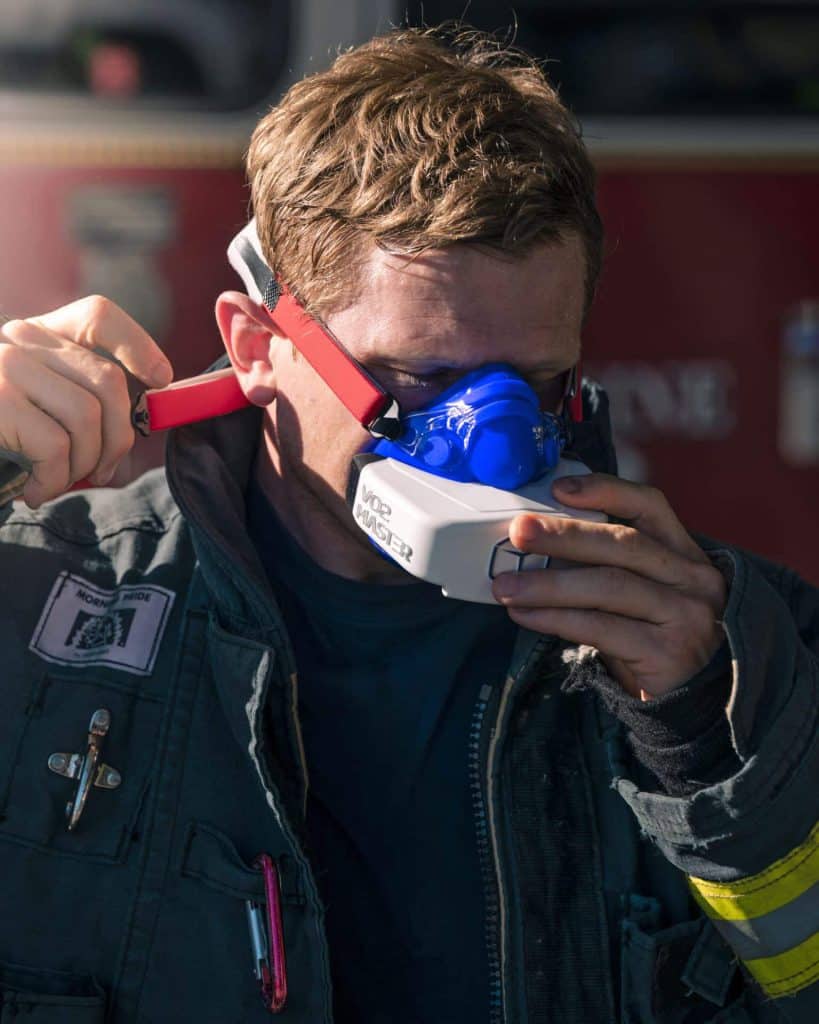How to Choose the Right Step Test for Your Athletes and Clients
In this edition of the VO2 Master Education Series, performance coach Sean Seale chats with Dr. Andrew Sellars, Co-Founder of VO2 Master, about step tests—what they are, why they can be useful for your athletes, and how to pick the right modality for those tests. Read through the full details of their conversation below. SeanContinue reading "How to Choose the Right Step Test for Your Athletes and Clients"

In this edition of the VO2 Master Education Series, performance coach Sean Seale chats with Dr. Andrew Sellars, Co-Founder of VO2 Master, about step tests—what they are, why they can be useful for your athletes, and how to pick the right modality for those tests.
Read through the full details of their conversation below.
Sean Seale: What is a step test?
Dr. Sellars: A step test is an incremental increasing physiological test to measure performance over a wide range of intensities. In the literature, it’s known as a GXT or a graded exercise test.
There are a few pieces that are common to all step tests.
You have an incremental increase in workload, starting at your low intensity and finishing at a predetermined high intensity or maximum intensity.
You have a predetermined duration for each step, whether a one-minute step test, a three-minute step test, or five minutes.
And there’s a predetermined intensity, where you’re starting on a bike at 100 watts and going up to 300 watts. You can do that in 20-watt steps or 40-watt steps, and you can do that for different durations too: one minute, three minutes, or five minutes.
What can a step test be used for?
That’s a great question. Historically, step tests were used to help find thresholds–lactate thresholds, ventilatory thresholds, and VO2max–to help find information in a way that could be repeatable in future tests. One of the benefits of step tests is that you can repeat it and watch for changes in performance.
What has been ignored in a lot of literature and the history of using step tests is the value of the numbers that come out of the low-intensity area.
So, if you start the step test at a low intensity, there are dramatic things that happen physiologically that were often ignored and haven’t really been studied because everyone’s always keen on finding out what happens at the maximal end of things.
You can look at how the heart responds to low-intensity exercise, what happens to the heart rate and the stroke volume, the lactate or the muscle oxygenation, or the oxygen consumption.
So, the value of step tests really can be looking at data across a wide range of intensities and not just waiting for the maximum intensity to use as the assessment base.
So, when would it make sense for a coach to use a step test with their athletes? When would it be useful?
I think they can be used all the time.
Definitely at the beginning of a program to assess where an athlete is starting from. Or, if you’re dealing with someone who’s new to sports, to help get an assessment of their physiology at the beginning of the program.
Repeating the step test at regular intervals makes a lot of sense to me to assess whether the program’s actually getting the desired effects that you’re hoping for. Whether that’s improving their performance at low intensity so that they can perform longer duration of training without negative effects. Or that they’re improving their maximal performance. And you can use that test to help assess whether the changes are occurring.
The other reason to add a step test into a program is to assess where an athlete is on any given day. So, when an athlete comes to me and says, “Hey, Coach, I’m feeling really tired.” Well, let’s do a step test and see which part of your physiology is actually being affected by this fatigue or by the injury.
You may find that there is a specific system that is being broken down and may need a rest; whether that’s the cardiac system or the respiratory system.
Using VO2 Master, we quite often pick up respiratory fatigue or cardiac fatigue that is limiting oxygen supply. We can adjust our program to support what the athlete is already telling us in their perceived exertion or in their response to the training.
How do you pick the right modality for a step test?
Specificity is key.
In a perfect world, you would test the athlete in the sport that they’re most involved in. If they’re a cyclist, test them on a bike. If they’re a runner, test them running.
The benefit of VO2 Master is it’s portable enough that you can use it in a number of different modalities. We’ve tested hockey players on a skate mill or skiers out on a ski mill. The benefit is being able to test in the sport that they’re doing.
You talked about the different stages. When would you use a short-step test, a continuous-step test, and a long-step test?
The only real reason to do a short step test is either the athlete is unfit and unable to do a longer step test, or you’re really looking towards the maximal value. So, you want to shorten up a test so that they can get to a maximum before they get too tired.
What happens physiologically during the ramp-up is lost if you do the step test too quickly. So, the only value you get out of a step test is some sort of threshold. We quite often use short-step tests for FTP determination. There are some automated versions of that; TrainerRoad uses a one-minute step test.
The longer you do the test, the more physiological data you’re going to collect. And that does become difficult for some people to interpret. At VO2 Master, we’re including more and more automation and helping understand what happens over long periods of time so that coaches aren’t having to look through lots of data over a long-step test.
You mentioned a stop-and-go test; quite a common set of tests used by a number of your listeners. It’s called the 515, which is five minutes of intensity, one minute of total rest, and then back to a five-minute intensity.
There’s good value in those because of what happens physiologically during rest after a hard intensity. How the body recovers in that one minute of rest shares some key components of how the systems recover and adjust to higher intensities.
Especially if you’re using a Moxy Monitor, some of those reoxygenation levels can give good insights into how the other systems are working; cardiac system, muscular system, and respiratory system.
So, the longer the test, the more physiological data you’re gonna get. And the more you’re able to tease out the ability of an athlete to sustain at any given point without changes to their physiology. It helps break down thresholds much easier and gives much better information at the detailed level you want when you’re coaching people.
